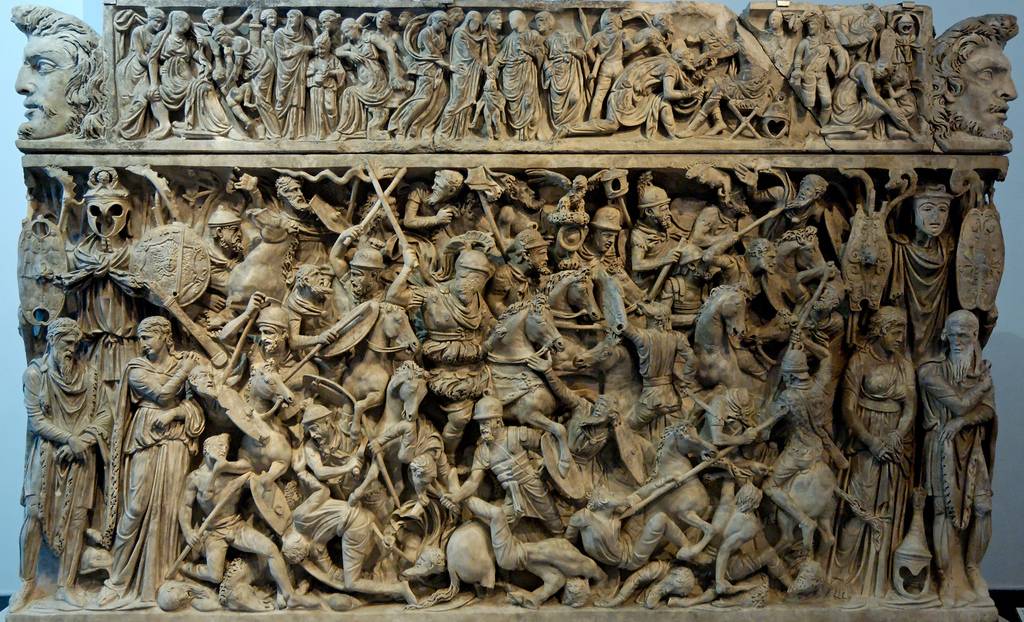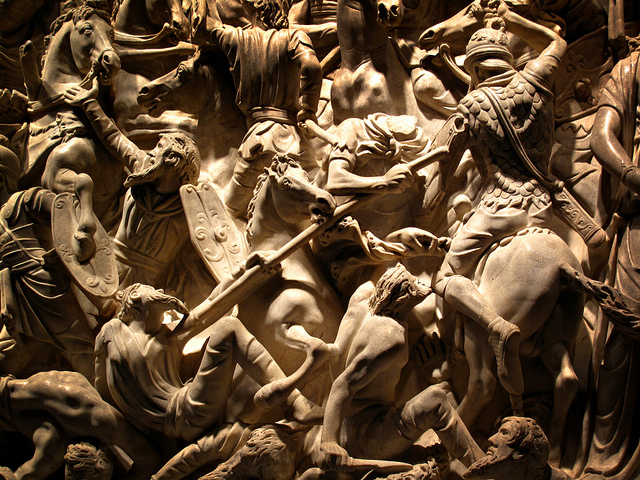A Symbol of Victory
The Portonaccio Sarcophagus (circa 180 AD), discovered in Portonaccio, Rome, is a striking example of Roman battle art. Now housed in the Museo Nazionale Romano (Palazzo Massimo), it was likely made for a Roman general who fought in Marcus Aurelius’ German-Sarmatian campaign (172–175 AD) during the Marcomannic Wars.

Dramatic Battle Reliefs
Its high-relief carvings depict a chaotic yet controlled battle scene:
- A Roman commander, idealized and unhelmeted, dominates the composition.
- Disciplined Roman soldiers crush disorganized Germanic and Sarmatian warriors.
- The deep carving and dramatic expressions amplify movement and intensity, influenced by the Column of Marcus Aurelius.
The Mystery of the Blank Face
The central figure’s unfinished face suggests the sarcophagus was either incomplete or meant to symbolize an ideal Roman hero rather than a specific individual.

Lasting Impact
A masterpiece of Roman imperial propaganda, the Portonaccio Sarcophagus embodies Rome’s military ideology—order over chaos, victory over the barbarian world.

